When we last checked in on circumnavigated the globe in a very quick 22 days. I just attended a talk at Google I/O and got some more info about some of the challenges the team faces in making this wild-arse project happen.
First off, if you need a refresher on what Project Loon is, here ya go. You should Now then. We learned today that the team names their balloons after birds. For example, one we heard about today was called Ibis. This gives them an easier way to remember and reference one, should it be keep coming up.
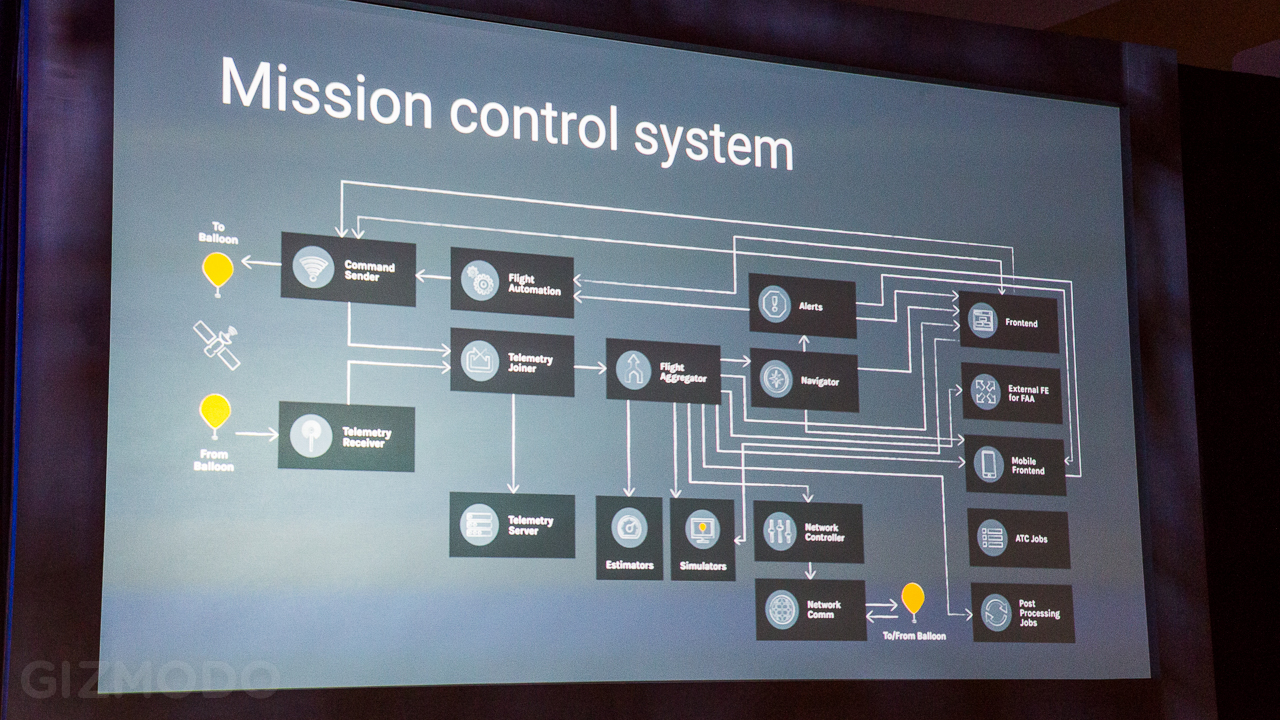
These balloons float at altitudes up to 25 kilometers and travel as fast as 324 km/h. That’s about as fast as a peregrine falcon can dive, which is nuts. As you might imagine, keeping track of a fleet of these things is rather challenging. So, just like NASA, Project Loon built a mission control.

Mission control conjures images of a bunch of people crowded into a semi-circular room staring at monitors and such. Loon’s mission control system is more of an online thing. Not only does it work on standard computers, but the flight engineers who monitor the balloons 24/7 can get all the data they need on smartphones and tablets, too.
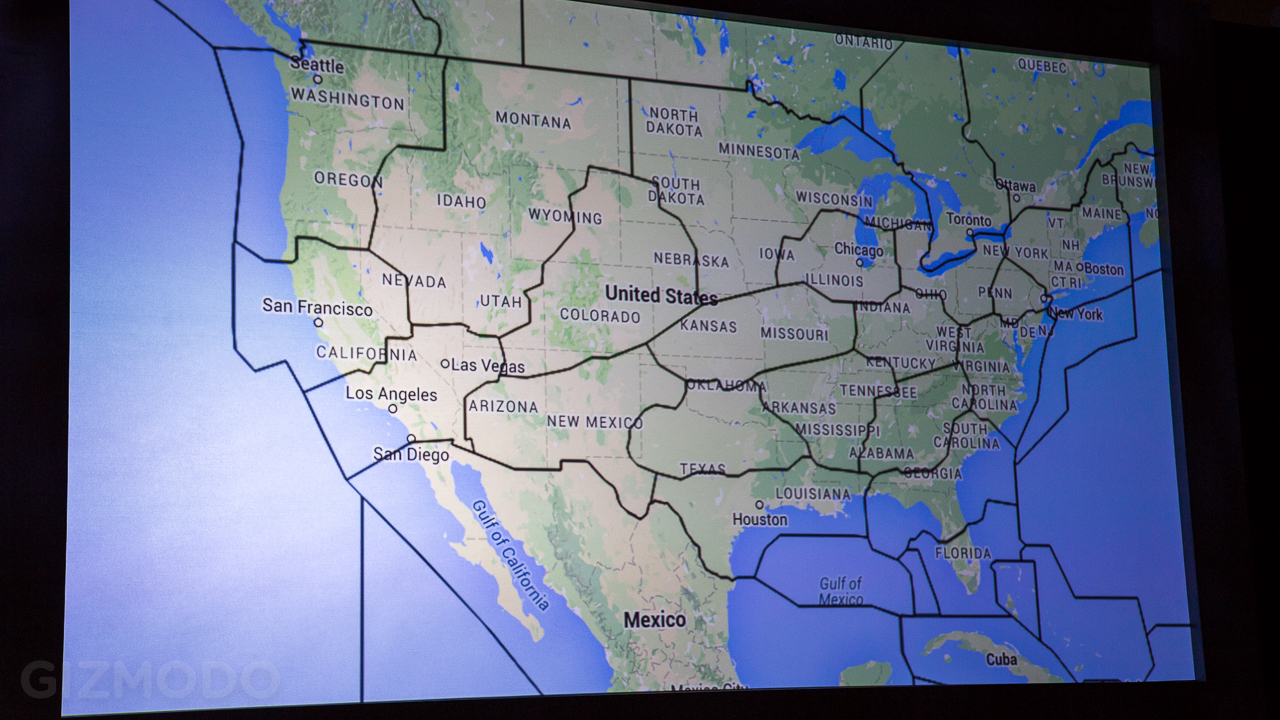
Just like with aeroplanes, if a mission control system detects that a balloon is about to enter another airspace, it will needs to send a message to the air traffic control in the new area so they can coordinate. With the system Google has designed, though, this detecting and alerting happens automatically.
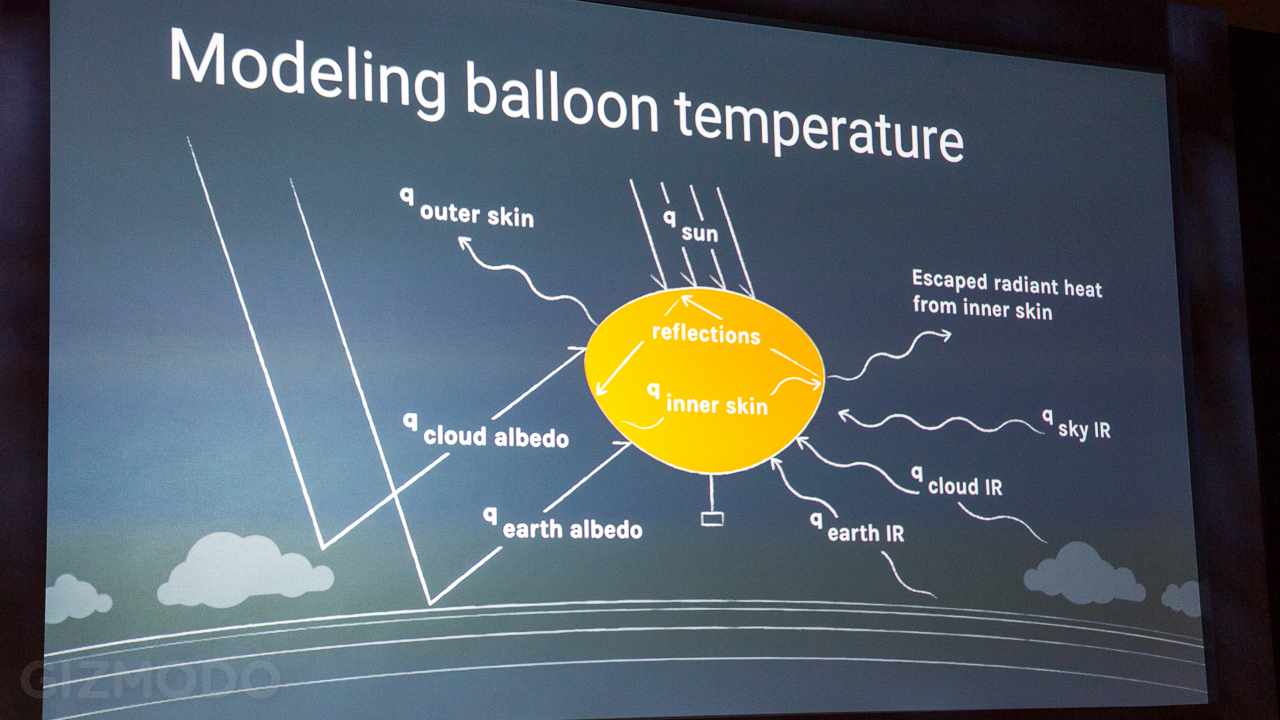
The team has an advanced system to monitor the balloon’s health. Too much pressure inside and it bursts. Too little it could lose buoyancy. So they need to be able to monitor the amount and pressure inside the balloon. This is largely dependent on the ambient temperature, which is actually very hard to measure when it’s that high. Radiation from the sun can really screw up the data. So they have had to outfit the balloons with sensors in different locations so they can get a real look at the temperature regardless of the common variables they encounter. This data is crunched server-side which gives the flight engineers information they can act on.
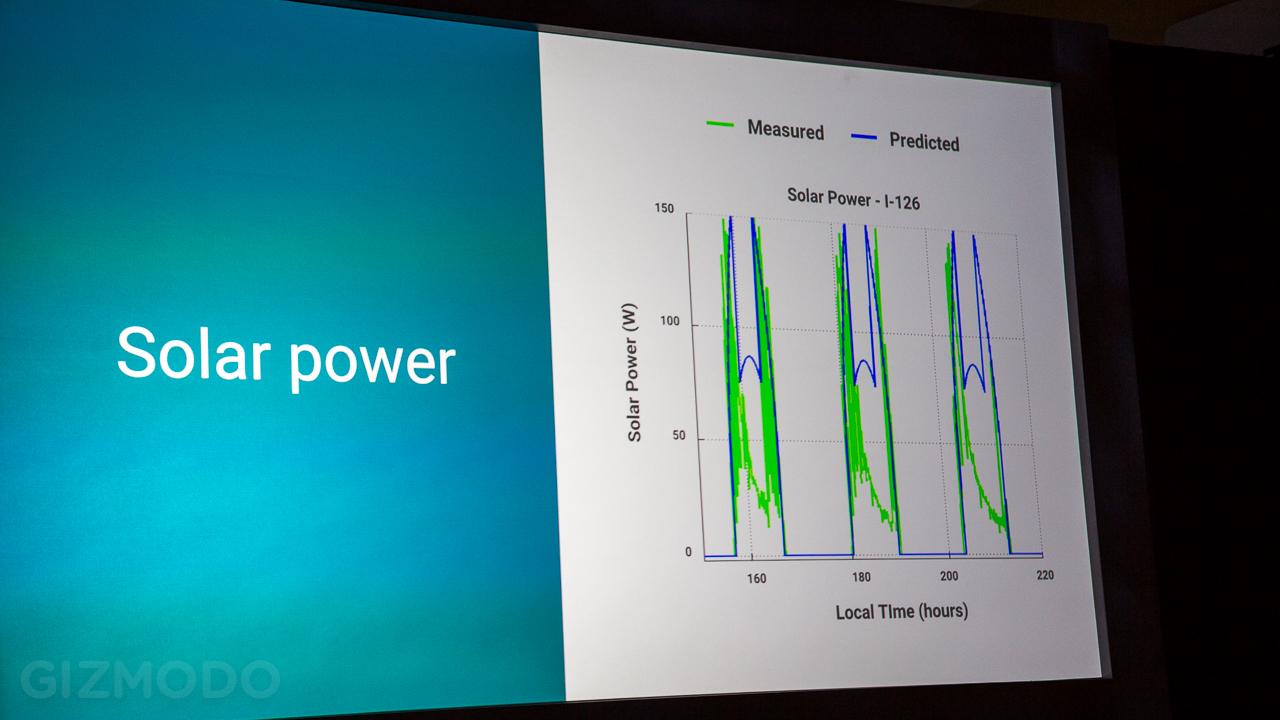
They also need to keep track of the state of their batteries. The balloons have solar panels that charge during the day, but of course they need to run at night, too. There are a ton of different variables that affect battery life. Differences in temperature and load level (say if they’re running the onboard heaters, etc.) can dramatically impact the battery’s health. Solar is tricky, too. Unlike the solar panels on your house, during peak hours solar hours the balloon actually casts a shadow on the solar panels which causes a dip in how much energy can be generated. This makes a Batman insignia-shaped wave when you look at it on a chart.
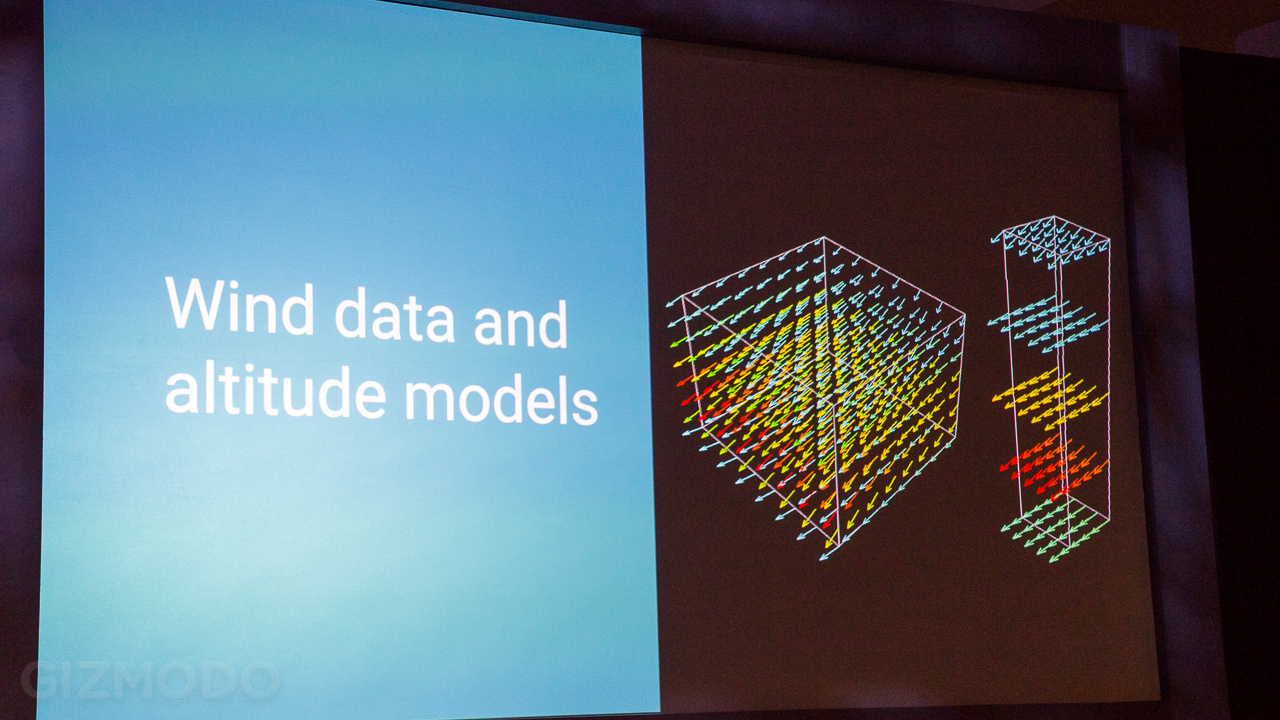
Then, of course, there’s all the navigational data, which is almost certainly the hardest to work with. Since Loon is dependent on the wind to travel, the team gets publicly available weather data from NOAA. They then make three-dimensional wind maps that can predict the direction of the wind at different altitudes. You can see this cube-shaped model above. They refresh their data from NOAA data every 6 hours, but they have to make 16-day models out of that. That is just a tremendous amount of data. Luckily Google isn’t exactly hurting for server power.
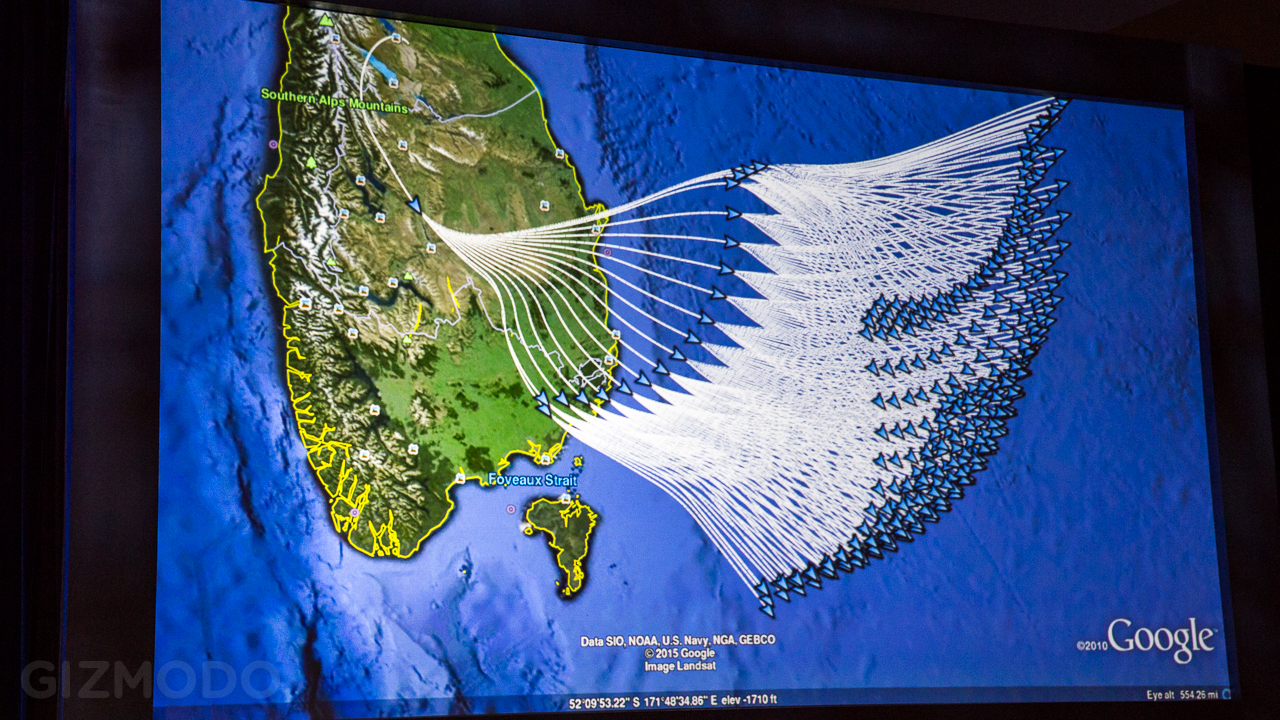
With the data gathered from Loon, the team created a program called the Crazy Simple Planner which helps them predict a trajectory to help point the balloon to where they want it to go. It’s very visual and very easy to interpret the data through that lens. Or it’s easier, anyway. Nothing about this stuff looks remotely easy.
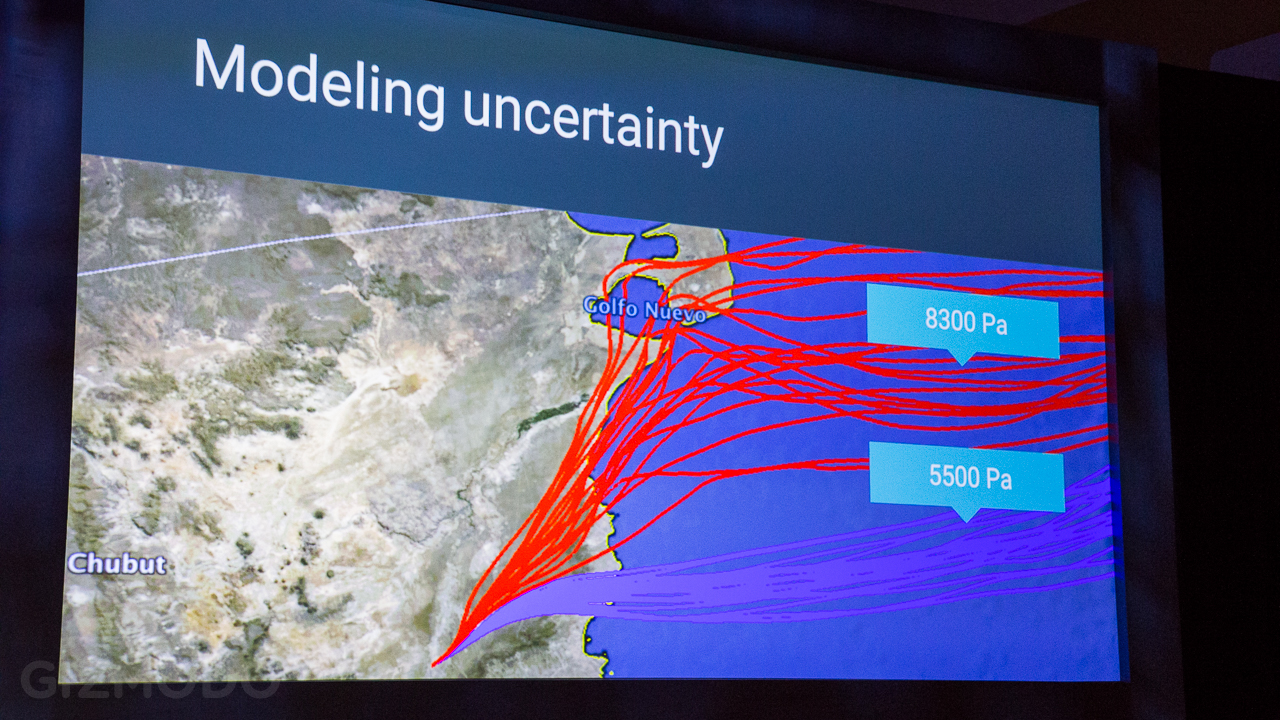
They also understand that shit happens. As anyone who has planned a camping trip knows, weather doesn’t always line up with the predictions. There’s wind-noise and other complications. So they have other programs that run contingency calculations to help them estimate where balloons will end up. They used advanced simulations to help them do this, like the one you see above. You can try a lot of different things in sim pretty easily. Moving thousands of balloons around the globe, not so much.
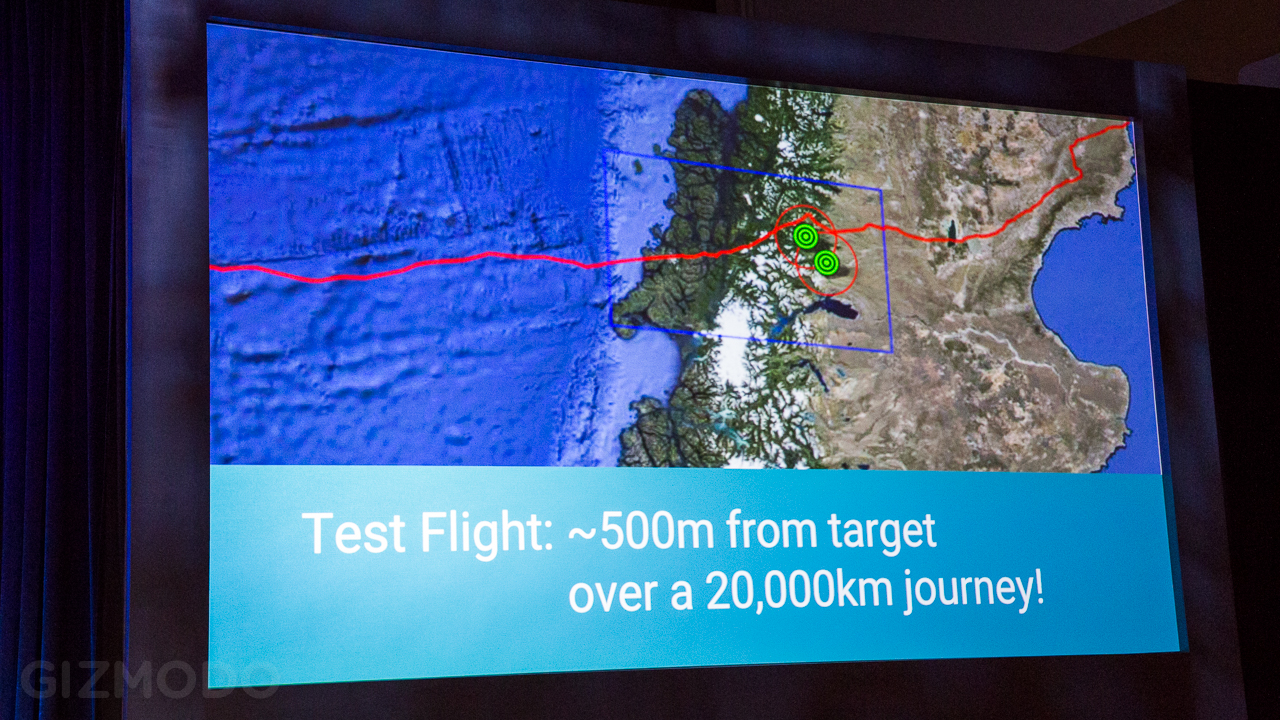
All this adds up to a program that’s knocking off some pretty major achievements. Not only did a Loon balloon manage that trip around the globe 11 days faster than was predicted, but another balloon managed to land within 500 metres of its targeted landing spot after an extremely long 20,000km flight. A balloon did that with no propulsion — just rising and falling to ride the different wind currents. Pretty amazing.

The Project Loon team acknowledged that they still have a long way to go before they’re able to make uninterrupted internet access available to every human on the planet, but it’s incredible how far they have come in just a couple years. Hopefully they will continue ramping things up, and the hilarious UFO scares will continue in perpetuity. [Project Loon]
